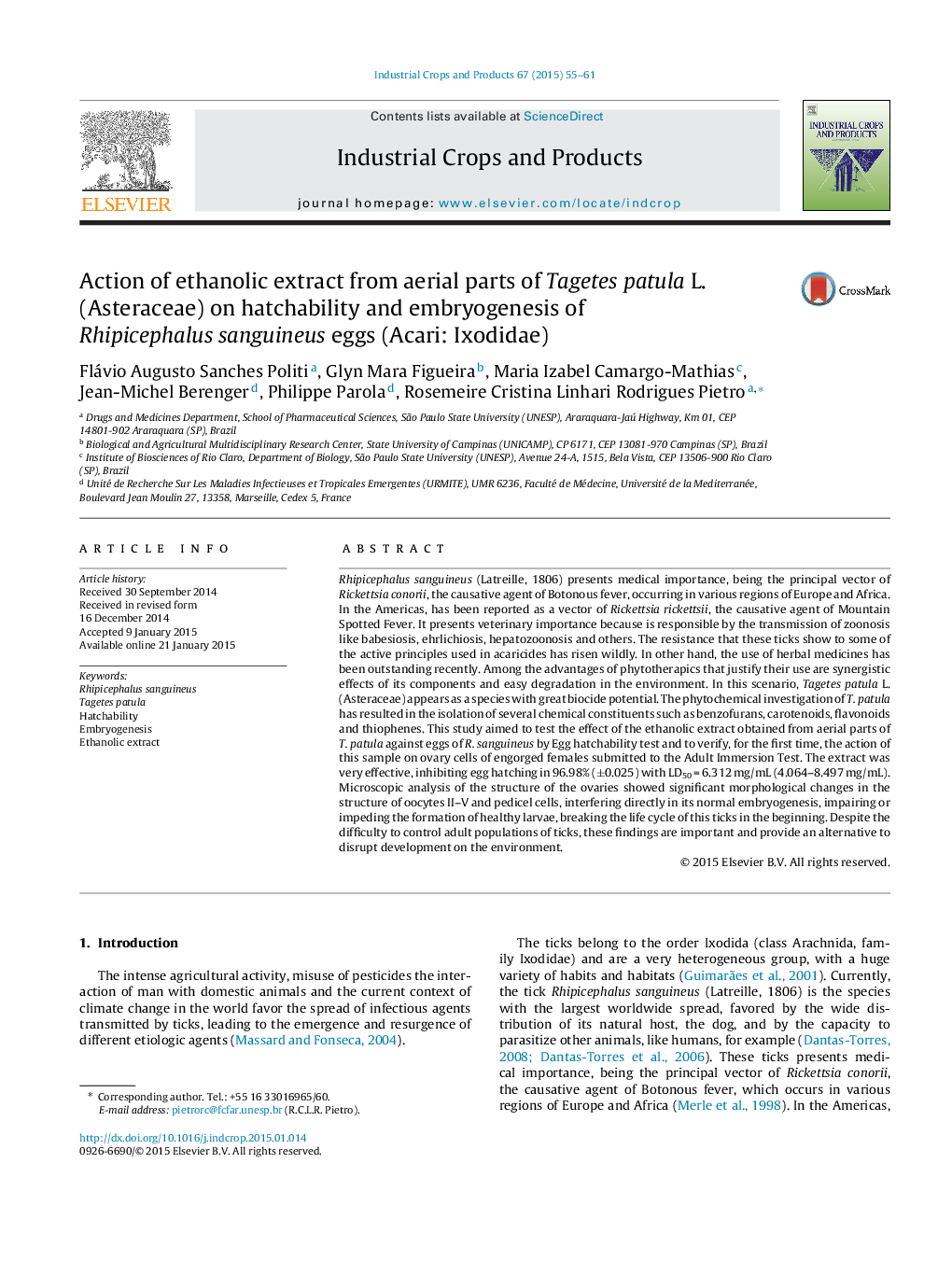| کد مقاله | کد نشریه | سال انتشار | مقاله انگلیسی | نسخه تمام متن |
|---|---|---|---|---|
| 4513056 | 1624842 | 2015 | 7 صفحه PDF | دانلود رایگان |

• The phytochemical investigation of different parts of Tagetes patula has resulted in the isolation of chemical constituents in many different classes of secondary metabolites, such as benzofurans, carotenoids, thiophenes and flavonoids.
• The 70% ethanolic extract obtained from aerial parts of T. patula was very effective, inhibiting egg hatching close to 100%.
• Microscopic analysis of the structure of the ovaries of treated females with the 70% ethanolic extract showed significant morphological changes in the structure of oocytes and pedicel cells. This effect of the extract can be responsible to impairing or impeding the formation of healthy larvae, breaking the life cycle of the Rhipicephalus sanguineus in the beginning.
Rhipicephalus sanguineus (Latreille, 1806) presents medical importance, being the principal vector of Rickettsia conorii, the causative agent of Botonous fever, occurring in various regions of Europe and Africa. In the Americas, has been reported as a vector of Rickettsia rickettsii, the causative agent of Mountain Spotted Fever. It presents veterinary importance because is responsible by the transmission of zoonosis like babesiosis, ehrlichiosis, hepatozoonosis and others. The resistance that these ticks show to some of the active principles used in acaricides has risen wildly. In other hand, the use of herbal medicines has been outstanding recently. Among the advantages of phytotherapics that justify their use are synergistic effects of its components and easy degradation in the environment. In this scenario, Tagetes patula L. (Asteraceae) appears as a species with great biocide potential. The phytochemical investigation of T. patula has resulted in the isolation of several chemical constituents such as benzofurans, carotenoids, flavonoids and thiophenes. This study aimed to test the effect of the ethanolic extract obtained from aerial parts of T. patula against eggs of R. sanguineus by Egg hatchability test and to verify, for the first time, the action of this sample on ovary cells of engorged females submitted to the Adult Immersion Test. The extract was very effective, inhibiting egg hatching in 96.98% (±0.025) with LD50 = 6.312 mg/mL (4.064–8.497 mg/mL). Microscopic analysis of the structure of the ovaries showed significant morphological changes in the structure of oocytes II–V and pedicel cells, interfering directly in its normal embryogenesis, impairing or impeding the formation of healthy larvae, breaking the life cycle of this ticks in the beginning. Despite the difficulty to control adult populations of ticks, these findings are important and provide an alternative to disrupt development on the environment.
Journal: Industrial Crops and Products - Volume 67, May 2015, Pages 55–61